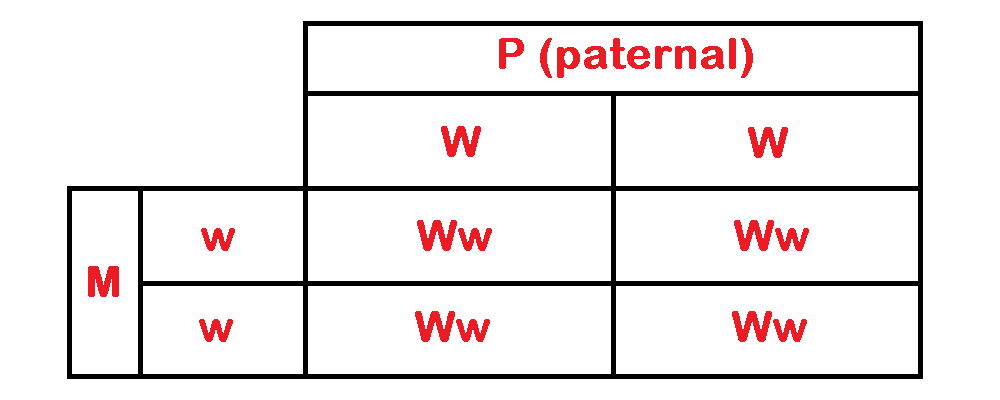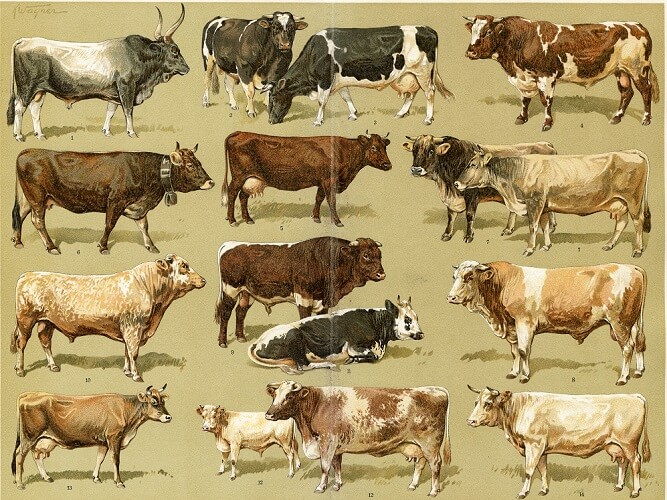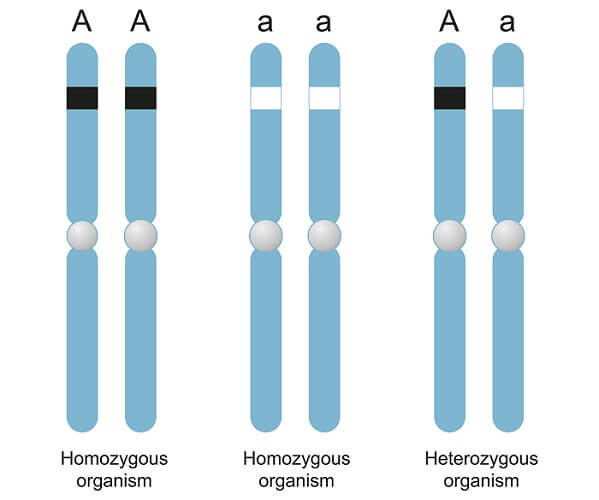Definition
Homozygous is a term in the field of genetics that describes two identical copies of alleles in the DNA gene sequence that encodes for a particular trait. As we obtain our genetic material from a father and a mother, not all of the double-strands of our DNA is exactly the same. Homozygosity can occur throughout the DNA in any organism that reproduces via two parent cells.
What Does Homozygous Mean?
Homozygous is a Greek-derived word – the prefix homo means same; zygous comes from zugos – a word that implies being joined together.
The terms heterozygous and hemizygous tell that two alleles composed of the sequences from two parents are different (hetero) or half (hemi) respectively.

Homozygous Genotype
To understand what a homogenous genotype is, we first need to know the absolute basics of genetics.
All of our cells contain DNA – a double-stranded spiral of molecules that forms the code for how to build the organism it is found inside.
DNA is the recipe book for protein synthesis. Our bodies are the result of these proteins – even where the synthesis of fatty acids and sugars is concerned, proteins are imperative. From the enzymes that help us to digest food to our muscles, organs, and skin, all are built upon the chains and bundles of amino acids we call proteins.

While every cell (except mature red blood, skin, hair, and nail cells) contains the complete recipe book, not all of this information is expressed. Cells express certain genes depending on their function. For example, a beta cell in the pancreas expresses the genes that produce the hormone insulin and this function is switched off in other cells.
All the DNA-carried information used to create an organism is called a genome. The information that produces the proteins for a single characteristic (trait) – such as insulin production – is called a gene. As a very long string of DNA is more likely to get damaged, portions of the genome are packaged into tightly-wound chromosomes. These chromosomes split the genome into sections. One could say that the genome is the recipe book, the chromosome a particular chapter, and each gene an individual recipe.
A gene is not always found at a single location on a chromosome. Furthermore, polygenic traits can be the result of more than one gene. Another word for a trait is a genotype. Where a trait is visible it is called a phenotype.
Identical twins start with the same genotype as they come from the same sperm and egg cell; however, environmental conditions can change some DNA sequences as they develop in the womb and also after birth. The genotype will eventually differ. If these changes are visible, identical twins will also differ in phenotype.

Two more terms are important when looking at the homozygous genotype: allele and locus. An allele is one version of one gene. Our DNA has one allele from our father and one from our mother. Where these alleles are located on a chromosome is called the locus.
Chromosomes come in pairs – one maternal and one paternal. However, during the fertilization process, parts of these individual chromosomes can cross over in a process known as recombination This mechanism increases diversity within a species or its genetic variation.
Exactly where an allele can be found on a chromosome is called a locus. As the sequences that control traits can be spread across different alleles, many genes have multiple loci and many traits are the result of multiple genes.
In terms of the DNA recipe book, the locus can be seen as a line of instructions and the allele as the page number of each instruction. The information that tells you how to convert gas marks to degrees Fahrenheit and the information that tells you what ingredients to use are found at different points within a chapter (chromosome). Where multiple genes are involved, you might even need to refer to different chapters. That page (allele) might contain more than one recipe. For example, a locus containing multiple genes linked to type two diabetes is found at 20q12 -13.1. This number refers to the long arm (q) of the twentieth chromosome, in region one and band two. The number after the hyphen gives an even more specific sub-band location.

Finally, we need to look at allele dominance, even though this makes no difference to the outcome in terms of homozygous alleles. If a puppy is born to a wire-haired father and a smooth-haired mother, it is more likely that this puppy will have wire hair. This is because the wire-haired allele is dominant in dogs. A dog can only be smooth-haired if there are no wire-haired alleles present.
We can best look at dominant and recessive traits using a Punnett square. In the example below, W indicates the inherited dominant wire-haired allele and w the inherited recessive smooth-haired gene.
The father of a litter of puppies has two dominant W alleles and the mother two recessive ww genes. These alleles are passed on to their puppies, all of which will have wire hair like the father. However, all of them will also have the recessive allele for smooth hair. Only WW and ww are considered homozygous. All of the puppies produced in this litter are heterozygous (described in more detail further on).

Only when two recessive alleles are present in a puppy will that animal show the smooth-haired phenotype. And this can only happen if both parents – even if wire-haired – have at least one recessive allele in their genetic makeup. In the Punnett square below, two Ww parents produce three wire-haired puppies and one smooth-haired.

In terms of homozygous genotypes and phenotypes, both alleles must be the same. In the above Punnett square, two puppies have homozygous alleles – WW (wire-haired) and ww (smooth-haired).
The two wire-haired puppies with one of each allele – Ww – are not homozygous but heterozygous for the alleles that decide their hair growth patterns. Here, the dominant gene decides the hair type.
Homozygous vs Heterozygous
Homozygous and heterozygous, as we have seen in the above Punnett square example, do not necessarily decide what phenotype is present. Both homozygous and heterozygous alleles can produce a dominant phenotype; however, only a homozygous allele pair in an individual can produce a recessive phenotype.

A heterozygous allele pair (gene) can either result in complete dominance (Ww in the above example), codominance, or incomplete dominance. Codominance and incomplete dominance are similar – the former means that two different alleles have the same dominance. The most common example is that of the alleles that govern our blood type. People with heterozygous alleles for A and B blood types have AB type blood rather than either A or B, depending on which is the dominant allele.
Incomplete dominance describes a blending of two different phenotypes, such as a straight-haired father and curly-haired mother giving birth to wavy-haired offspring. Neither codominance nor incomplete dominance can occur with a homozygous allele.

Alternatively, just because offspring show a dominant phenotype, it is impossible to say whether these are the result of homozygosity unless one looks closely at its DNA. Only when a recessive phenotype appears do we have a very strong indication that the paired alleles are homozygous.
Self-fertilizing plants are homozygous, consistently repeating their genotype over countless generations. Even so, environmental factors and biological factors can change gene sequences over time through genetic mutations. If a heterozygous plant can self-fertilize, there will be more variations in its seedling’s traits.
Homozygous Dominant Examples
Homozygous dominant examples are countless; however, we cannot judge whether a phenotype is truly homozygous dominant without looking closely at the DNA. As we have already learned, a heterozygous dominant example would produce the same phenotype as the homozygous dominant genotype.
Animals bred for generations for a particular trait are more likely to be homozygous dominant or homozygous recessive. Over time, two similar alleles become more common and there is less chance of producing heterozygous pairs except in cases of incomplete- or co-dominance.

Huntington disease and Marfan syndrome are autosomal dominant disorders that only need one dominant allele to take effect. Even so, this does not guarantee that the afflicted person is a homozygous example of a dominant allele.
Any visible phenotype – whether this is related to how a body looks, behaves, moves, or functions – could be a homozygous dominant example; however, to be completely sure we need to look at the gene loci.
Homozygous Recessive Examples
Homozygous recessive examples are much easier to pick out than homozygous ones. This is because a recessive trait (that is neither codominant nor incomplete) can only be seen if two recessive allele pairs make up the gene that controls that trait. New technology has brought us homozygosity mapping that helps to predict recessive traits within individual family trees and animal pedigrees.

If both parents have brown eyes but have a child with blue eyes, we have an example of a homozygous recessive phenotype. In this case, brown eyes are dominant. If brown eyes were recessive, all offspring would have brown eyes. Instead, two heterozygous parents have produced a homozygous recessive child in terms of eye color.
Many diseases are the result of homozygous recessive alleles. Recessive inheritance is associated with sickle cell anemia and cystic fibrosis. These are called autosomal dominant conditions as the alleles affected are only found in paired autosomal chromosomes (autosomes). When sex chromosomes produce inheritance pattern disorders, the results are known as sex-linked traits.
As a mother has two X chromosomes and a father one X and one Y, only X-linked homozygous dominance occurs in males. In females, this could be heterozygous or homozygous. Even so, homozygosity in X-linked recessive disorders in females is very rare – most of these affect female fertility and very few offspring will carry the disorder into future generations. Y-linked disorders are only possible in males.

Bibliography
- Khatib H (Ed.). 2015. Molecular and Quantitative Animal Genetics. New Jersey, Wiley Blackwell.
- Aguilar L. 2019. Genes, Genomes, Genetics and Chromosomes. Waltham Abbey, ED-Tech Press.
- Anestis M, Ploeger Cox, K. 2019. 5 Steps to a 5: AP Biology. New York, McGraw Hill.

